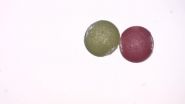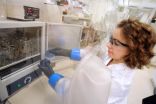(Press-News.org) A simple non-surgical gum disease treatment markedly reduces the thickness of the wall of the arteries, a risk factor for heart disease, according to a first of its kind study among Aboriginal Australians.
The study findings may be of particular importance to Aboriginal Australians, who in general have poorer oral health and higher rates of cardiovascular disease.
Published in the latest issue of Hypertension, the study reports a significant decline in thickening of the wall of the carotid artery a year after a single session of gum treatment.
"The study shows that non-surgical periodontal therapy significantly reduced the progression of thickening of the carotid artery over a one-year period," says study co-author, University of Sydney vascular disease expert Dr Michael Skilton.
"The magnitude of the reduction in thickening of the carotid artery in the treatment group, relative to the control group, is similar to what has been observed in other clinical trials in high risk populations.
"The effect is comparable to a 30 per cent fall in low-density lipoprotein cholesterol – commonly referred to as 'bad' cholesterol – which is associated with a decreased risk of heart disease.
"It's also equivalent to the effects of reversing four years of aging, 8 kg/m2 lower body mass index, or 25 mm Hg lower systolic blood pressure."
The study was prompted by conjecture about the causative relationship between periodontal (gum) disease and atherosclerotic vascular disease and is among the first using a randomised trial to investigate a periodontal intervention on atherosclerotic disease.
Periodontal disease is an inflammatory disease affecting the soft and hard structures that support the teeth. In its early stage, the gums become swollen and red due to inflammation, which is the body's natural response to the presence of harmful bacteria.
In the more serious form of periodontal disease (periodontitis), the gums pull away from the tooth and supporting gum tissues are destroyed. Bone can be lost, and the teeth may loosen or eventually fall out.
Atherosclerosis is the most common cause of heart attacks, strokes, and peripheral vascular disease – collectively known as 'cardiovascular disease'. It usually causes no symptoms until middle or older age but as narrowing and hardening of the arteries accelerates, they choke blood flow, causing pain and other serious cardiovascular complications.
Despite reducing thickening of the carotid artery, the study found no effect of periodontal therapy on arterial stiffness – another pre-clinical marker of atherosclerotic vascular disease and risk factor for cardiovascular disease.
"Future studies may tell us whether a more intensive approach to periodontal therapy, including regular periodontal maintenance schedules, can produce more marked improvements in vascular structure," Dr Skilton says.
"The findings indicate that periodontal therapy has a systemic impact beyond treating gum disease.
"If further studies can confirm our report the treatment of periodontal disease may become reducing means by which to reduce the risk of cardiovascular disease, especially in high risk populations such as Indigenous Australians."
INFORMATION:
Fast Facts – gum disease
Up to one in four adult Australians have moderate to severe periodontitis (gum disease)
Gum disease is twice as common in Aboriginal Australians as in non-Aboriginal Australians
Periodontitis is age related, with prevalence increasing from around three per cent in 18–24 year olds to about 60 per cent in those aged 75 years and older.
Periodontitis is more common in males (28 per cent) than females (20 per cent)
Several studies indicate that periodontal disease is connected to diseases such as heart disease, diabetes, and rheumatoid arthritis. Scientists believe that inflammation may be the basis for the link between these systemic diseases.
This study was collaboration between researchers from the University of Sydney, University of Adelaide, Charles Darwin University, Royal Darwin Hospital, University of South Australia, the Aboriginal Research Unit, South Australian Health and Medical Research Institute, Royal Prince Alfred Hospital, University of North Carolina at Chapel Hill, USA. END
Treating gum disease improves vascular health in Indigenous Australians: Study
2014-06-26
ELSE PRESS RELEASES FROM THIS DATE:
Increased nearsightedness linked to higher education levels and more years spent in school
2014-06-26
German researchers have found strong evidence that attaining a higher level of education and spending more years in school are two factors associated with a greater prevalence and severity of nearsightedness, or myopia. Published online this month in Ophthalmology, the journal of the American Academy of Ophthalmology, the research is the first population-based study to demonstrate that environmental factors may outweigh genetics in the development of myopia.
While common, nearsightedness has become even more prevalent around the world in recent years and presents a growing ...
Victoria's volcano count rises
2014-06-26
Geologists have discovered three previously unrecorded volcanoes in volcanically active southeast Australia.
The new Monash University research, published in the Australian Journal of Earth Sciences, gives a detailed picture of an area of volcanic centres already known to geologists in the region.
Covering an area of 19,000 square kilometres in Victoria and South Australia, with over 400 volcanoes, the Newer Volcanics Province (NVP) features the youngest volcanoes in Australia including Mount Schank and Mount Gambier.
Focusing on the Hamilton region, lead researcher ...
Shaken, not stirred -- mythical god's capsules please!
2014-06-26
VIDEO:
Two oil drops, covered with particles of different properties, coalesce due to the action of an alternating electric field, forming a Janus capsule.
Click here for more information.
Everything depends on how you look at them. Looking from one side you will see one face; and when looking from the opposite side – you will see a different one. So appear Janus capsules, miniature, hollow structures, in different fragments composed of different micro- and nanoparticles. Theoreticians ...
A versatile joystick for animation artists
2014-06-26
Remember those molecule models made from sticks and balls you could assemble to study complex molecules back in school? Something similar has taken shape in the Interactive Geometry Lab at ETH Zurich. ETH-professor Olga Sorkine-Hornung and her team do not study molecules but ways to manipulate virtual shapes, like animated characters on a computer screen. Now they have developed an input device or "joystick" to move and pose virtual characters, made up – similar to the molecule models – of modular building blocks. An artist can assemble these blocks into an approximate ...
US rich get richer on stock market investments while modest investors are left behind
2014-06-26
In a new study, researchers from Imperial College Business School, Columbia University and the University of Maryland found that wealthy individuals in the US can get in relative terms up to 70 per cent times greater returns on their investments than those with modest wealth, when the yields on assets such as stocks and bonds are calculated. The team say that this further widens the income gap between rich and poor and potentially creates disparities in society.
Income inequality in the US has been steadily rising. According to a report by Oxfam International released ...
DFG and Leopoldina: Recommendations on 'scientific freedom and scientific responsibility'
2014-06-26
The Deutsche Forschungsgemeinschaft (DFG, German Research Foundation) and the German National Academy of Sciences Leopoldina presented their joint recommendations on "Scientific Freedom and Scientific Responsibility" on 26 June 2014 in Berlin. Attended by representatives from the media, the Professors Jörg Hacker and Peter Strohschneider, Presidents of the Leopoldina and the DFG respectively, presented recommendations for handling security-relevant research, placing the subject against the background of the current political debate. With the publication the research organisations ...
Virus infection supports organ acceptance
2014-06-26
This news release is available in German. Over 150 million people throughout the world suffer from chronic infection with the hepatitis C virus (HCV), which causes massive damage to the liver. Advanced liver diseases often necessitate liver transplants. In the new clinical study Dr. Felix Bohne and his colleagues studied together with Prof. Alberto Sánchez-Fueyo from King's College London 34 hepatitis C patients at the Liver Unit of the University Hospital Clínic de Barcelona who had received new livers.
The researchers had two objectives here: first, they wanted ...
Fruit flies help scientists uncover genes responsible for human communication
2014-06-26
COLUMBIA, Mo. – The evolution of language in humans continues to perplex scientists and linguists who study how humans learn to communicate. Considered by some as "operant learning," this multi-tiered trait involves many genes and modification of an individual's behavior by trial and error. Toddlers acquire communication skills by babbling until what they utter is rewarded; however, the genes involved in learning language skills are far from completely understood. Now, using a gene identified in fruit flies by a University of Missouri researcher, scientists involved in ...
Early surgical follow-up with primary care physicians can cut hospital readmissions
2014-06-26
(SALT LAKE CITY)—Patients who have post-operative complications following high-risk surgery have a significantly lower risk of being readmitted to the hospital within 30 days if they go see their primary care physician soon following discharge, a new study in JAMA Surgery shows.
The study shows that better coordination of care between surgeons and primary care physicians is important to help reduce hospital readmissions within 30 days for those high-risk surgery patients who have post-operative complications or live with a chronic disease, according to Benjamin S. Brooke, ...
Managing specialized microbes to clean stubborn chemicals from the environment
2014-06-26
Chlorinated chemicals perform a host of societally useful functions, but they also have a dark side. Once their use life has ended, such agents often become environmental contaminants, sometimes resistant to bioremediation.
In a series of new studies, Anca Delgado, a researcher at Arizona State University's Biodesign Institute, examines unique groups of microorganisms, capable of converting hazardous chlorinated chemicals like trichloroetheene (TCE) into ethene, a benign end product of microbial biodegradation.
The research was conducted as part of her doctorate work ...


